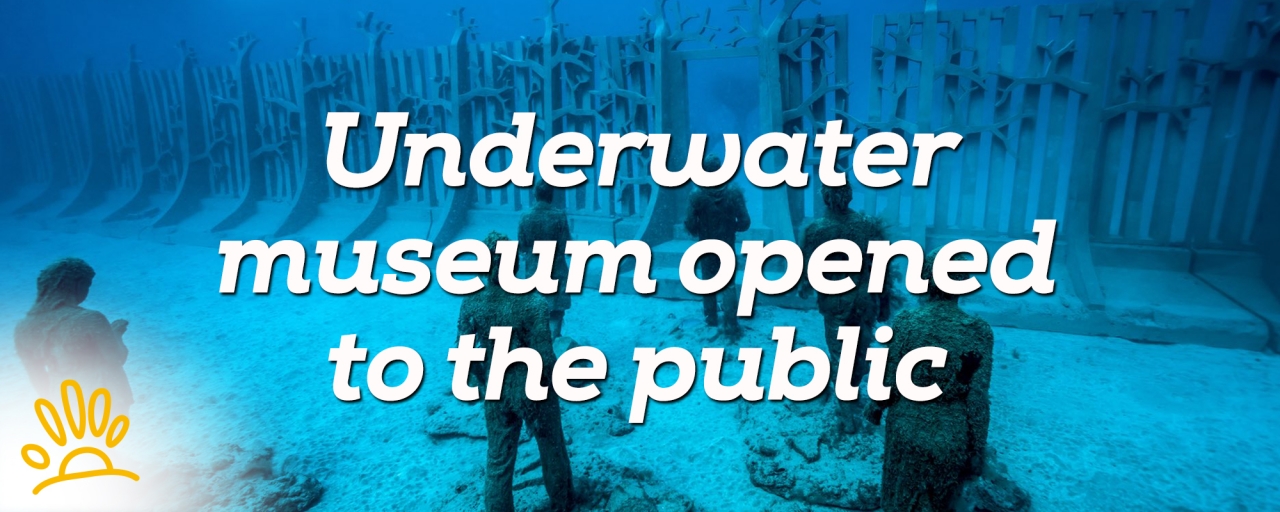The underwater museum "Museo Atlántico" of Lanzarote officially opened on Tuesday January 10, becoming the first underwater art museum in Europe.
The underwater exhibit features more than 200 sculptures, work by artist Jason deCaires Taylor. This is the first completely underwater museum in Europe, occupying a 2,500 square meter marine area south of Lanzarote, specifically at Las Coloradas bay in Playa Blanca, 14 meters deep.
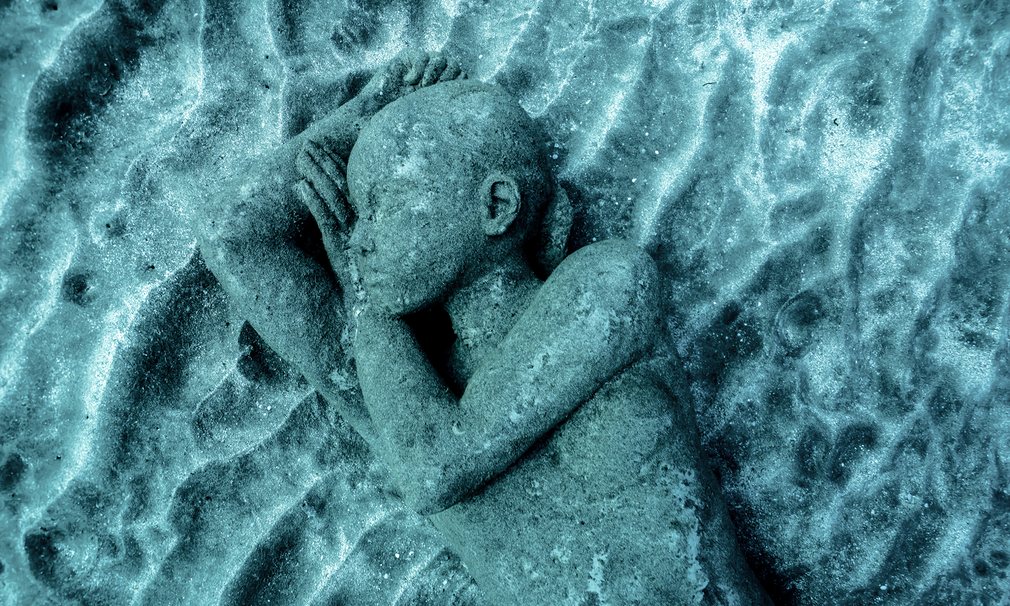
This project began more than two years ago. And It aims to create a strong visual dialogue between art and nature. The Atlantic Museum was designed to create a large-scale artificial reef, the first works, which were installed in February 2016, have already seen a considerable increase in species generation and abundance rates. The same artist has marveled at the rapid growth and marine fauna such as "angelotes" sharks, barracudas and sardines, octopuses, marine sponges and the occasional butterfly rays.

This is the first time Taylor installs such large architectural structures. The new facilities include a wall of 100 tons and 30 meters in length; The sculpture of a botanical garden that refers to the local flora and fauna and a composition of 200 human figures of real size that form a human swirl.
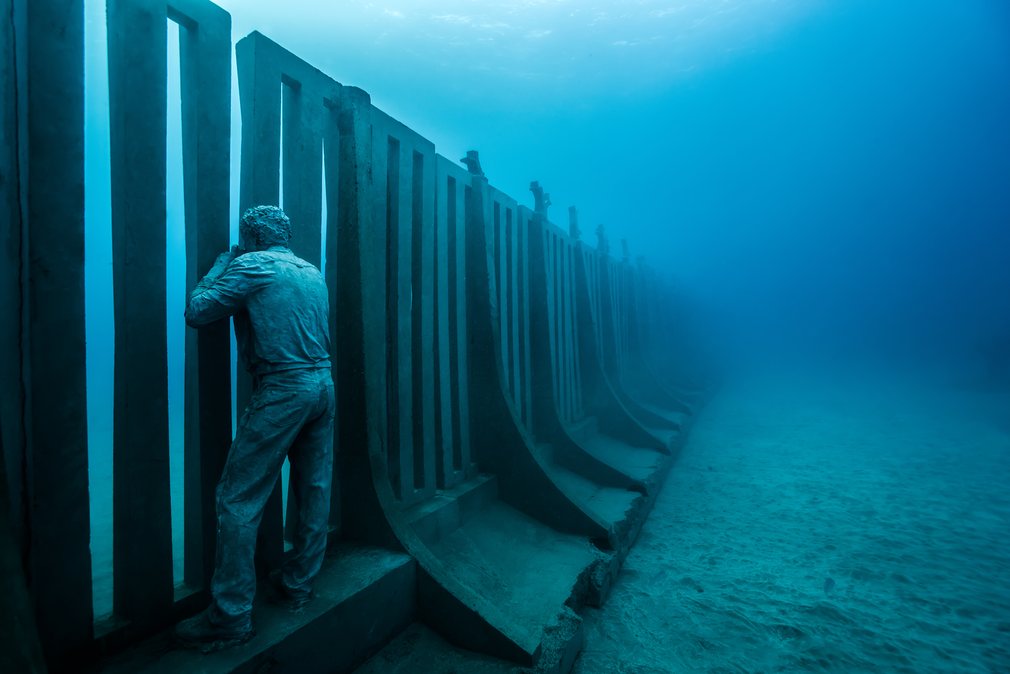
The museum, which occupies an area of 50x50 meters of sandy seabed devoid of life, is built with environmentally neutral pH materials, and all the pieces have been designed to adapt to endemic marine life.
The new pieces of the Atlantic Museum are:
La pira inmortal (The immortal pyre)
Molded from a local fisherman from La Graciosa island, on the north coast of Lanzarote, the sculpture is made up of a series of concrete sticks and it is representing a traditional funeral pyre.

Cruzando el Rubicón (Crossing the Rubicon)
Crossing the Rubicon consists of a group of 35 figures walking towards an underwater wall and entrance, a boundary between two realities and a portal to the Atlantic Ocean.
The wall, which is part industrial, part organic, stretches 30 metres long and 4 metres high and contains a single rectangular doorway at its centre.
The wall is intended to be a monument to absurdity, a dysfunctional barrier in the middle of a vast fluid, three-dimensional space, which can be bypassed in any direction.
It emphasises that the notions of ownership and territories are irrelevant to the natural world. In times of increasing patriotism and protectionism the wall aims to remind us that we cannot segregate our oceans, air, climate or wildlife as we do our land and possessions.
We forget we are all an integral part of a living system at our peril.
To cross the Rubicon is to pass a point of no return. The work aims to mark 2017 as a pivotal moment, a line in the sand and reminder that our world’s oceans and climate are changing and we need to take urgent action before its too late.
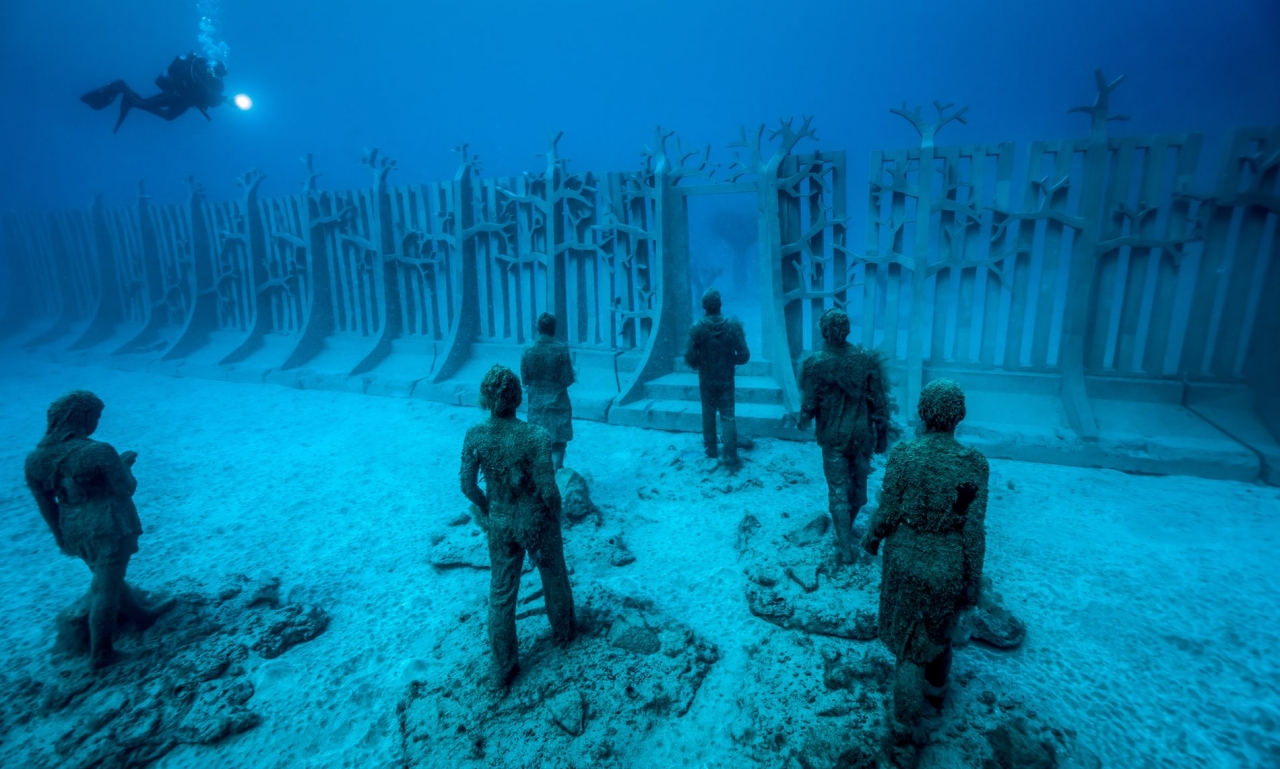
Portal
The Portal depicts a hybrid animal/human sculpture looking into a large square mirror, which reflects the moving surface of the ocean. Forming part of the underwater botanical garden the concept is intended to portray water within water, an interface or looking glass into another world, the blue world. The mirror is elevated on a series of cactus forms which contain a series of small compartments and “living stations” designed to attract octopus, sea urchins and juvenile fish.

Descontrol (Deregulated)
Deregulated consists of a children’s playground enjoyed by suited businessmen. A swing, a sea-saw, a play dolphin ride all demonstrate the insouciance and arrogance of the corporate world towards the natural world.
The sea-saw references a petroleum extraction pump, a comment on the control of these fossil fuels and their unregulated use.
The dolphin ride is indicative of the burden we are placing on marine species and its ultimate collapse if left unchecked.
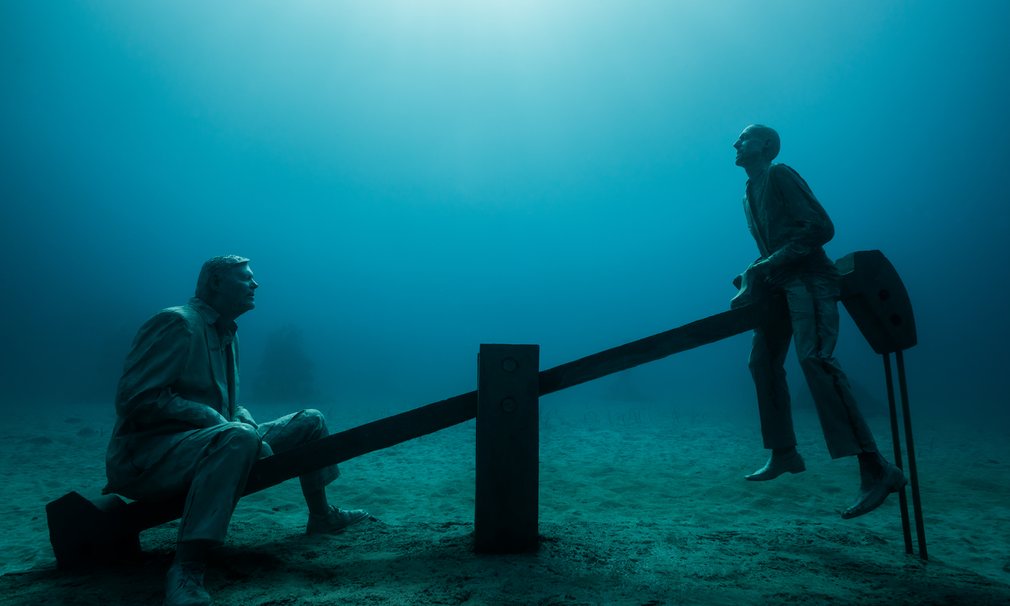
Remolino humano (The Human Gyre)
The last exhibit in Museo Atlantico is the Human Gyre, over 200 life-size figurative works creating a vast circular formation or gyre. Consisting of various models of all ages and from all walks of life, the positioning of the figures constructs a complex reef formation for marine species to inhabit and is a poignant statement for visitors to take with them at the end of the tour.
The artistic installation reminds us that we have evolved from marine life, and are all subject to the movements and will of the ocean. The piece embodies our naked vulnerability to its inherent power, and our fragility in the face of its cycles and immense force.
It provides the oxygen we breathe, it regulates our climate and it provides a vital source of nutrition to millions of people.
A visit to Museo Atlantico may lead us to a closer understanding of our relationship with the natural marine environment and appreciate the need to value and protect this fragile ecosystem in order to save ourselves.
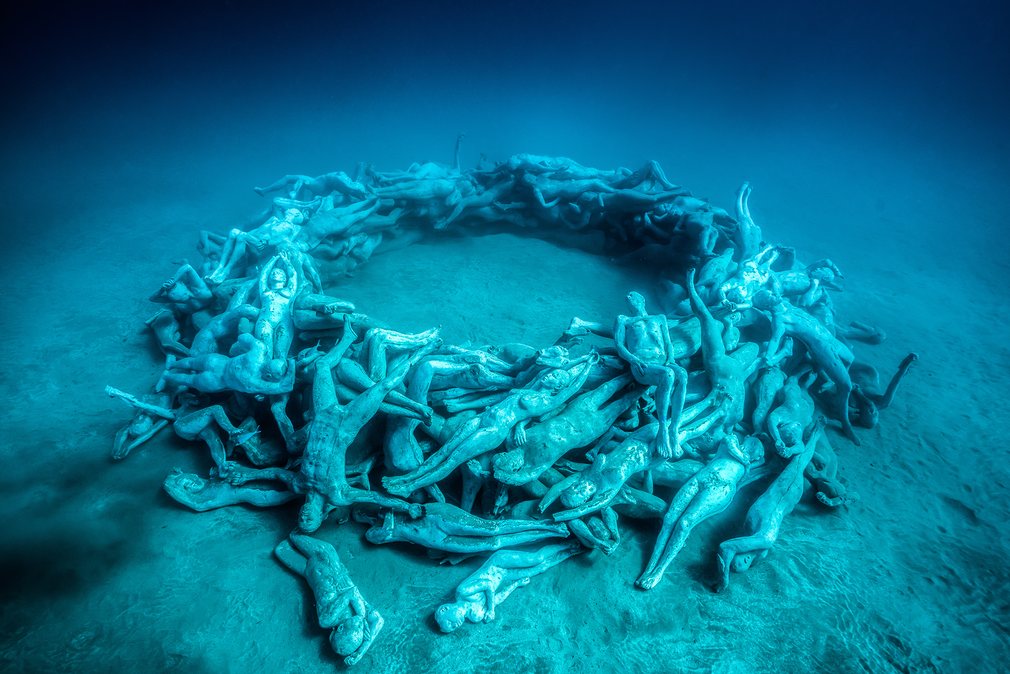
The museum includes an entrance and an exit and the pieces are arranged in a sequence of 12 installations. There are two options when visiting the museum: snorkeling or scuba diving, for which one must have a title to dive up to 12 meters deep.
Do you want to discover the Atlantic Museum? Book here:
Under water opening
The president of the Cabildo of Lanzarote, Pedro San Ginés, and the creator of the monumental artistic ensemble, the British echoescultor Jason deCaires Taylor, both cut the traditional inaugural ribbon, in this case, with the peculiarity of doing so underwater, launching a message of hope for the Big Blue.
"I hope that the Museo Atlántico of Lanzarote represents an entry point to a different world and promotes a better understanding of our precious marine environment and of how much we depend on it", Taylor said at the museum’s opening.
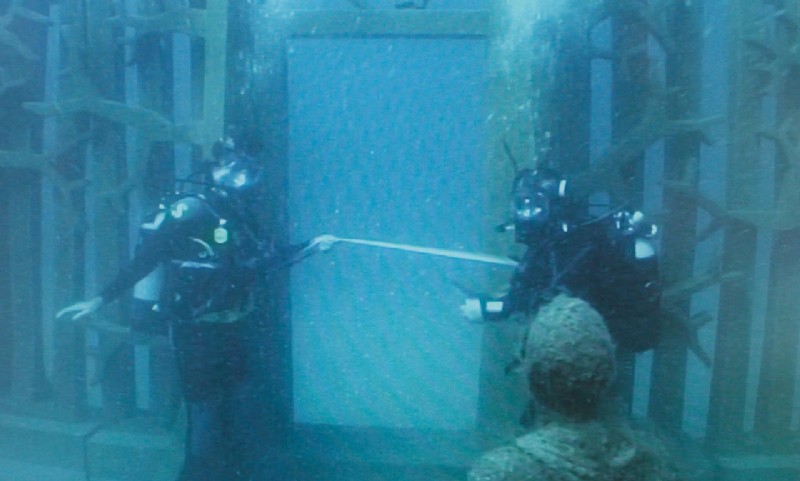
Jason DeCaires Taylor Biography
Jason DeCaires Taylor was born in 1974 and grew up between Europe and Asia. Of a British father and a mother native of Guyana he dedicated a lot of time of his childhood learning about Malaysia’s coral reefs.
The young Jason graduated in 1998 from the London Institute of Arts and later became a dive instructor and an experienced underwater photographer.
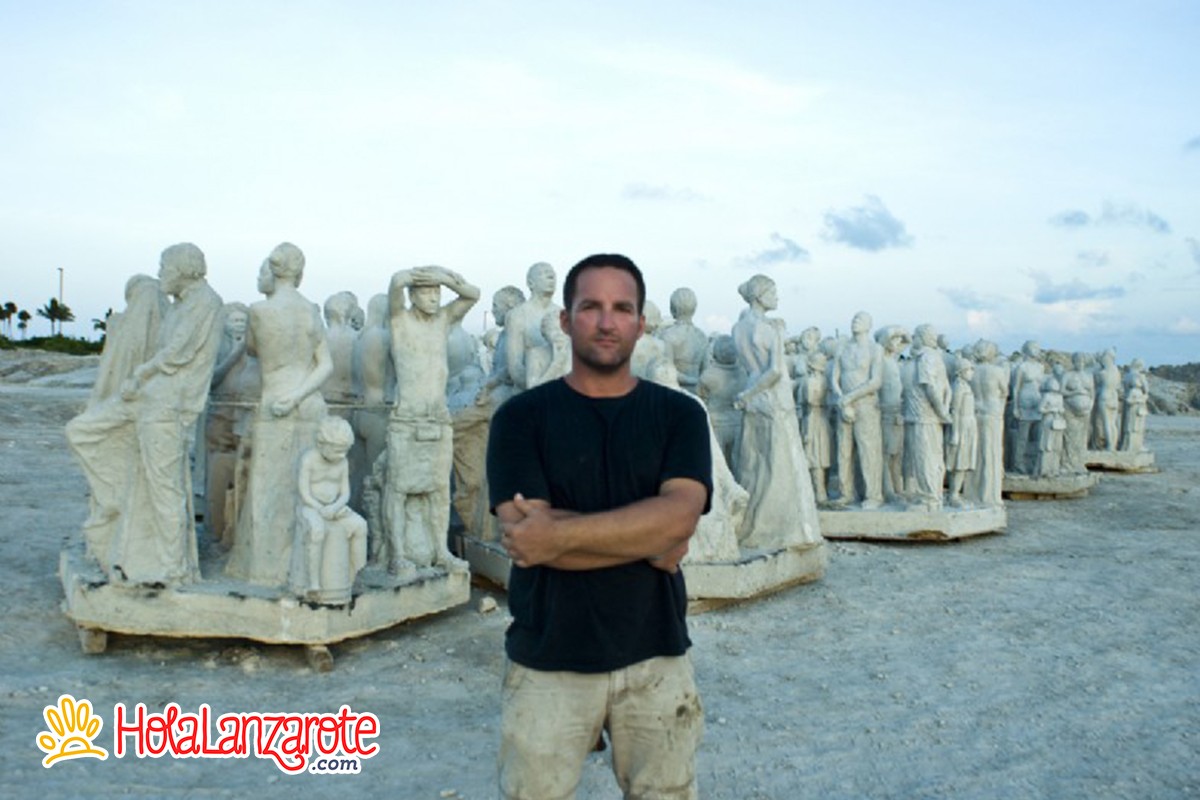
The connection between art and sea made him a sculptor specialized in underwater sculptures, whose work also aims to draw attention on the conservation of fragile marine environments.
This original underwater museum, is the third of the artist after the Underwater Museum of Art (MUSA) in Cancun (Mexico) and the Molinere Underwater Sculpture Park on the caribbean island of Grenada.



